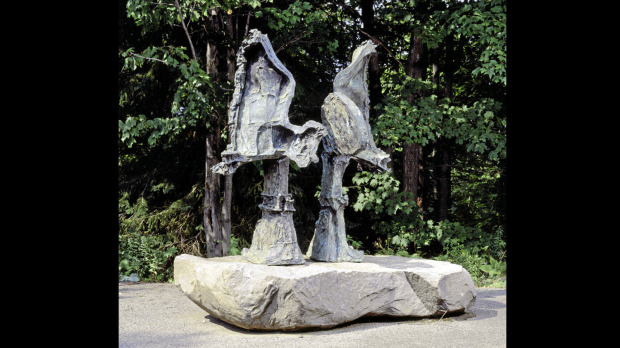Monday, August 08, 2011 -  Capitoline Museum,Germanicus,Rome
Capitoline Museum,Germanicus,Rome
 No comments
No comments
 Capitoline Museum,Germanicus,Rome
Capitoline Museum,Germanicus,Rome
 No comments
No comments
Amelia's Bronze Germanicus Travels to Rome for Portrait Exhibit at Capitoline Museum; Curators Reveal New Information about the First Century Bronze Statue
 |
| Capitoline Museums, Rome, Italy |
by Catherine Schofield Sezgin,
ARCA Blog Editor-in-Chief
In mid-July, I traveled to Amelia for an art crime conference and to visit the archaeological museum to see the bronze statue of Germanicus. However, Germanicus, found outside the gates of Amelia in 1963, was not in town. Germanicus had been disassembled and boxed, then shipped to Rome for a six-month exhibit at the Musei Capitolini at the Piazza del Campidoglio designed by Michalangelo (1475-1564) and commissioned by Alessandro Farnese (Pope Paul III from 1534 to 1549) to impress Charles V (1500-1558), the ruler of the Holy Roman Empire.
 |
| Palazzo Farnese |
In Rome, I mistakenly walked to Campo di Fiori looking for the Musei Capitolini as directed by Google Maps. If it hadn't been so hot and humid, I would have recalled that I was looking for some very large steps to climb up to the museum and that it was behind not Piazza Navona but the Victor Emmanuelle II's monument. Instead I found Palazzo Farnese, now the French Embassy, around Campo di Fiori before following directions from an Italian couple to walk further and further down the road.
By the time I'd walked up the cordonata, Michelangelo's staircase wide enough for riders and their horses in the day, and turned right into the first building, the Palazzo Nuovo, a security guard stopped me. The ticket box was closed and although the museum would be open another 50 minutes, I could not go in without a ticket. I begged, he pointed to the surveillance camera above us, and I stepped back out onto the Piazza. After asking two people -- one woman had lost her husband who had their tickets and she couldn't go into the building to find him -- I obtained a used ticket and returned to the building's entrance. The security guard said that I couldn't go in because I had not purchased the ticket. But I begged, saying he'd only told me that I had to have a ticket. He finally sought advice from another staff member, a woman who seemed to have more authority with her walkie-talkie, and I was let into the building.
"Germanicus, Germanicus, Germanicus," I called softly walking through hallways and passed many portraits and monuments. It had been a long day, it was 44 degrees Celcius outside, and obviously the heat had gotten to me. "Germanicus, I can't find you!"
 |
| Germanicus amongst other Roman portraits, Capitoline Museums |
In the very last room, at the far end of the floor, Germanicus stood in the rear. The rope usually around him at the archaeological museum in Amelia was gone and visitors could walk directly up to his base. He was marvelously old and delicate as up close it was obvious that he was depending upon a steel and wood structure to remain upright.
Then there was a display sign that read:
“The bronze statue found at Amelia, in Umbria, was not made as a portrait of Germanicus. The original head was eventually replaced with that of the young Germancius, whom his uncle Tiberius had designated as his heir, but who died in 19 AD. What probably happened is that the person (Perhaps Germanicus’s son Caligula) who had originally been honored with this statue was later condemned to damnatio memoriae [by the Senate], the removal of his public images to erase all memory of him, and that the costly statue was then reused to honor another member of the dynasty.
“The ornamentation is very complex. On the upper part of the breastplate is the menacing image of the monstrous Scylla. On the lower part is a scene from Homer: Achilles ambushing the young Trojan prince Troilus. The scene is completed by the two Victories who converge from the sides toward the Greek hero, bringing him arms as a reward for his feat. The decoration extends to the back of the armor, where we see a religious scene in which two women dance in front of a candelabrum, symbol of the eternity of the imperial power. The pteryges, metal plates protecting the groin, are formed in the first row by lions’ heads and adorned in the second by heads of satyrs alternating with heads of gorgons. As a whole, the decorative plan was meant to epitomize control of the seas (Scylla) and to compare the honored man to Achilles, the most valiant of all the Achaean heroes.”
The bronze statue of Germanicus was dated 25-50 AD. It made sense that it had not been commissioned at the time of his death in 19 AD as his uncle, the second Roman emperor Tiberius, did not even attend the placement of his ashes into the Mausoleum of Augustus. So this statue could have been made for his son Caligula and when the Senate voted to erase the assassinated emperor's image from history, it was the head of Germanicus that replaced the original.
Surprised that only the head had been made for Germanicus, I retreated back to Piazza Navona, stopping to purchase a few DVDs of my favorite Italian television series about Salvo Montalbano in Sicily; ate a dinner of friend zucchini blossoms and artichokes at the always-welcoming family restaurant of Ristorante Archimede San Eustachio (Piazza dei Caprettari, 63); and fought my way to the counter at the cafe of Sant 'Eustachio for not one, but two cappucini.
Germanicus will be on display in Rome through September 25 at the Capitoline Museum.




